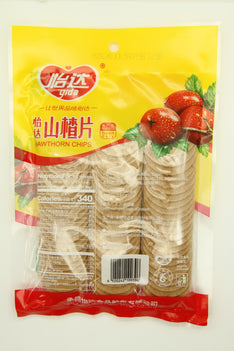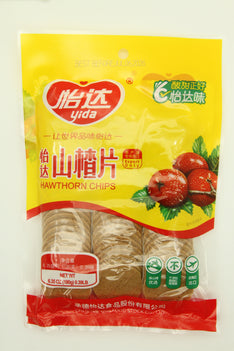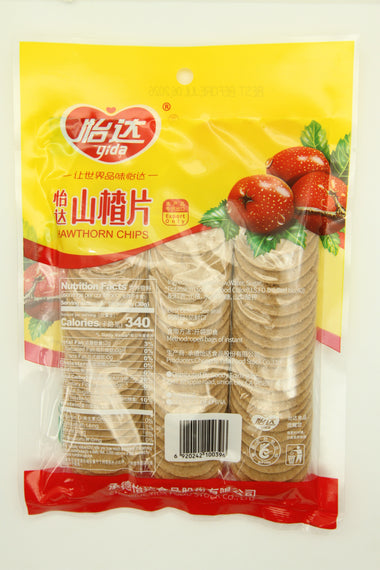Product successfully added to your shopping cart
The Great Pineapple Cake Mystery: Why Isn't It Filled with Pineapple?
If you've ever been lucky enough to receive a box of Taiwanese pineapple cakes (鳳梨酥, fèng lí sū), you might have been surprised to read the ingredients list. That sweet, tangy, golden-yellow filling you just enjoyed? There's a very high chance it was made primarily from winter melon.
Your first reaction might be: "Why the bait-and-switch? I was promised pineapple!"
The answer isn't deception, but a story of culinary ingenuity, texture, and tradition.
Part 1: Why Winter Melon is the Secret Star
There are several key reasons why winter melon became the traditional base for "pineapple" cake filling.
1. The Texture Problem: Stringy vs. Smooth
-
Pure pineapple is fibrous and stringy. When cooked down into a jam, it can be unpleasantly tough and chewy, making it difficult to form into the smooth, compact fillings required for the cake's delicate, crumbly pastry.
-
Winter melon, on the other hand, is a textural chameleon. When cooked, it becomes soft, translucent, and easily mashed into a smooth, thick paste. This provides the perfect, melt-in-your-mouth base that can hold its shape without being stringy.
2. The Flavor Control: Overpowering vs. Balanced
-
Pure pineapple is very acidic and intensely tangy. While delicious, this can be too sharp for a rich, buttery pastry and for the Asian palate, which often prefers a more balanced sweetness.
-
Winter melon is famously mild. On its own, it's almost bland. This makes it the perfect "flavor canvas." It readily absorbs sugar, spices, and the essential pineapple flavor (from a smaller amount of pineapple concentrate or jam) without fighting it. This allows pastry chefs to create a filling that has the aroma and essence of pineapple, but with a much more mellow, rounded, and less tart profile.
3. The Practicality: Cost and Consistency
-
Pineapples are seasonal and their sugar content and flavor can vary greatly. Winter melon is more readily available, cheaper, and has a consistent, neutral flavor year-round. This ensures that every batch of pineapple cakes tastes the same, which is crucial for a mass-produced, iconic souvenir.
The Modern Twist: "Sunny Cakes"
Due to growing demand from tourists who want the tangy, pure pineapple experience, many bakeries now offer a premium version. These are often called "Sunny Cakes" (太陽餅, tài yáng bǐng) or explicitly labeled as "all-pineapple" filling. These cakes are typically more expensive, have a stronger, tarter flavor, and a darker, more fibrous filling.
In short: Think of traditional pineapple cake filling not as a "pineapple jam," but as a "pineapple-flavored jam" where winter melon is the primary ingredient that makes the texture and balanced flavor possible.
Part 2: What in the World is Winter Melon?
Now that we've solved the mystery, let's get to know this versatile vegetable.
The Basics:
Winter melon (Benincasa hispida), also known as ash gourd, white gourd, or wax gourd, is a large vine fruit (yes, it's a fruit!) in the same family as cucumbers, squash, and pumpkins.
What It Looks and Tastes Like:
-
Appearance: It's huge! A mature winter melon can be the size of a watermelon. It has a distinctive, oblong shape and a dark green, often dusty or "ashy" looking skin. This waxy coating helps it last for months, which is how it got its name—it could be stored and eaten throughout the winter.
-
Interior: The inside flesh is white, crisp, and porous, with a central cavity filled with large, flat seeds. Its raw texture is similar to a very firm honeydew melon or a apple.
-
Flavor: Its flavor is incredibly mild and subtly sweet, reminiscent of a cucumber or zucchini. It doesn't taste like a cantaloupe or honeydew. Its greatest culinary asset is its ability to absorb the flavors of the ingredients it's cooked with.
How Is It Used in Cooking?
Winter melon is a staple across Asian cuisines, prized for its cooling properties and texture.
1. In Savory Dishes (The Most Common Use):
-
Winter Melon Soup (冬瓜湯, dōng guā tāng): This is the most classic preparation. Chunks of winter melon are simmered in a light broth with goji berries, ginger, and often meat like pork ribs or chicken. The melon becomes soft and almost translucent, soaking up the savory flavor of the broth while contributing a light, refreshing sweetness.
-
Stir-fries: It can be sliced or cubed and stir-fried with garlic, mushrooms, and other vegetables. It retains a slight crunch while softening just enough.
-
Braised Dishes: It's excellent in stews and braises, where it absorbs rich sauces without falling apart completely.
2. In Sweet Dishes:
-
Pineapple Cakes: As we now know, this is its most famous sweet role!
-
Winter Melon Candy (冬瓜糖, dōng guā táng): The melon is candied by repeatedly boiling and soaking it in sugar syrup until it becomes a translucent, jade-green, intensely sweet treat, often used in drinks or as a snack.
-
Drinks: The candied winter melon is used to make a popular summer drink called Winter Melon Tea (冬瓜茶, dōng guā chá), which is refreshing and believed to have cooling properties.
Conclusion: A Partnership Perfected by Time
So, the next time you enjoy a Taiwanese pineapple cake, you can appreciate it not as a mislabeled treat, but as a masterpiece of culinary problem-solving. The humble winter melon isn't a cheap imposter; it's the essential partner that allows the pineapple to shine in its best possible form—creating the perfect balance of sweet, tangy, and crumbly that has made this pastry a beloved icon around the world.
Product of Taiwan
Net weight 227g









































